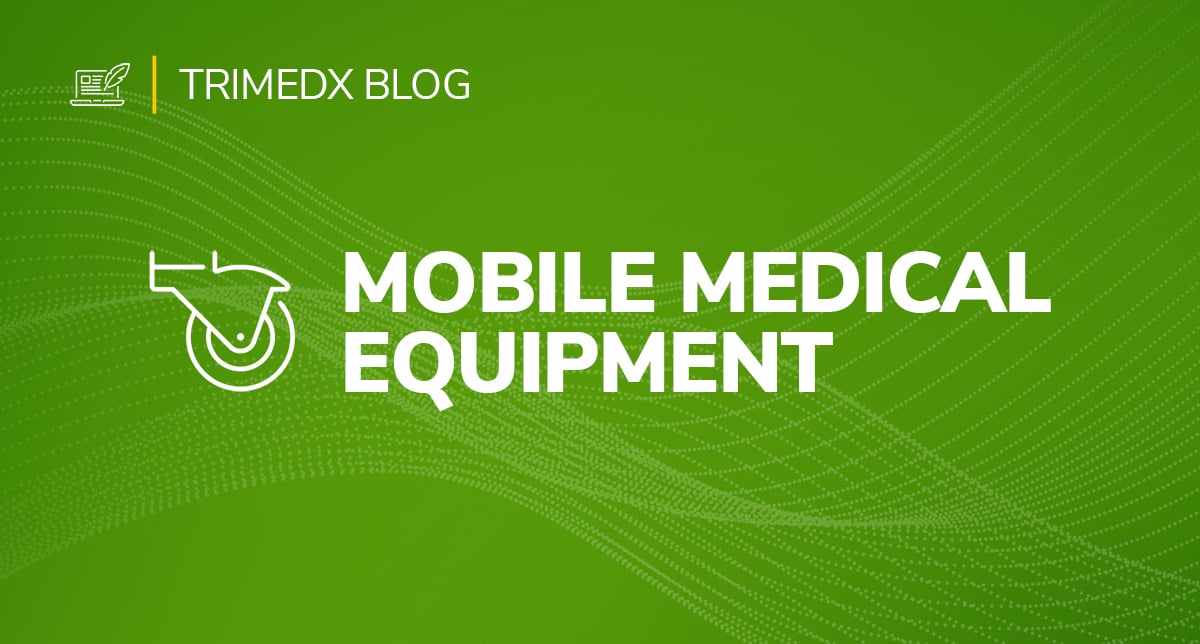Every medical device has a direct impact on care pathways and patient safety. Yet hospital procedures for mobile devices do not always reflect this importance. How health systems handle mobile medical equipment distribution can have major downstream effects on efficiency, safety, and financial performance.
Among medical devices, mobile equipment is some of the most ubiquitous. Devices such as infusion pumps, and sequential compression devices are in use in nearly every clinical unit. This equipment accounts for over 90% of health systems’ device inventories. These are crucial to clinical operations and patient care, but many hospitals lack standardized procedures for mobile medical equipment distribution. This lack of visibility in mobile equipment management can escalate patient safety risks, nursing burnout, and financial challenges for health systems.
Disorganization creates a tragedy of the commons for hospitals
Like other high-tech clinical assets, maintenance of many types of mobile medical equipment typically falls under healthcare technology management (HTM) teams. However, another key responsibility that sets these devices apart is distribution—making sure it is in the right place at the right time for patient care. In many health systems, these duties are not well-defined. The day-to-day management of mobile equipment often falls, by default, to the nurses who use it the most.
Instead of giving nurses greater autonomy over the equipment needed to care for patients, the lack of established processes increases the uncertainty and time burdens clinicians face. Nurses spend an average of an hour or more per shift trying to find the equipment they need. Across an entire nursing staff that number scales to a significant portion of time spent away from patients.
Nursing teams are already dealing with burnout from a pandemic and historic staffing shortages. It is unrealistic to expect them to manage mobile equipment distribution with the perspective of an entire organization’s needs. Rather, many health systems see nurses individually taking steps to store and allocate mobile equipment for their own access. This stockpiling is driven by nurses’ determination to provide care for their patients. Yet the result is a more chaotic, less reliable process that keeps nurses and equipment away from the patient bedsides where they provide the most value.
Misplaced responsibilities can increase safety risks
Effective mobile medical equipment distribution means more than just getting devices from one location to another. These devices spend a great deal of time near patients in all care environments, including hospital rooms, surgical suites, and emergency departments. This widespread and varied use makes them a major potential vector for healthcare-associated infections (HAIs). These infections are a cause of serious complications, affecting approximately one out of every 31 patients.
Complicating the process of disinfecting mobile medical equipment is the variety of transmissible pathogens that can cause HAI’s. Commonly used cleaners do not eliminate all types of viruses or bacteria, a problem that has become more pronounced with the rise of antibiotic-resistant bacteria strains. Sanitizing equipment requires a strong understanding of how effective cleaning agents are at eliminating biomass and how they could affect the mechanical components & durability of the equipment. As with transporting and allocating equipment, it is unrealistic to place this responsibility on nurses whose top priority must always be direct patient care.
Overlooked costs can accumulate quickly
An individual piece of mobile medical equipment, like an infusion pump, can carry a smaller initial purchase price than large, fixed equipment, such as an MRI scanner. Hospitals can also rent mobile equipment as a short-term solution for meeting fluctuations in patient volumes and demand.
Due to these distinctions, mobile medical equipment distribution is often overlooked as part of the immense financial challenges facing health systems, compared to major capital purchases. However, as mobile equipment also accounts for many hospitals’ inventories, these seemingly small costs can have an outsized impact at scale when devices are not tracked and managed efficiently.
Having an inaccurate inventory can result in misinformed purchasing decisions. Demand for new equipment may reflect what devices are currently accessible to clinicians, and not those stockpiled or misplaced across facilities. Likewise, rental equipment that is not diligently tracked can continue to rack up costs for health systems when it is no longer in use. As equipment remains unseen, the unnecessary costs they accumulate are also challenging to identify.
How to start streamlining mobile medical equipment management
Standardization and repetition are fundamental requirements for efficiently managing mobile medical equipment. With centralized repositories within arm's reach, nurses can easily locate and use the equipment when needed. This process can also create a clean environment for reliable disinfection procedures. Furthermore, having an established process for deploying and storing medical equipment makes it much easier to track inventory and control costs.
At a time when hospitals’ capital budgets and operating margins are more constrained than ever, mobile medical equipment may not seem as concerning as fixed capital assets. However, these devices are present throughout nearly every stage of the patient experience, and they can have a massive impact on the efficiency and quality of care delivery. The right processes can empower your clinical staff to focus more time on what matters most: better health outcomes for patients.
Interested in learning how best practices can be applied to improving your clinicians’ access to mobile medical equipment and helping your bottom line? Learn more about TRIMEDX.
